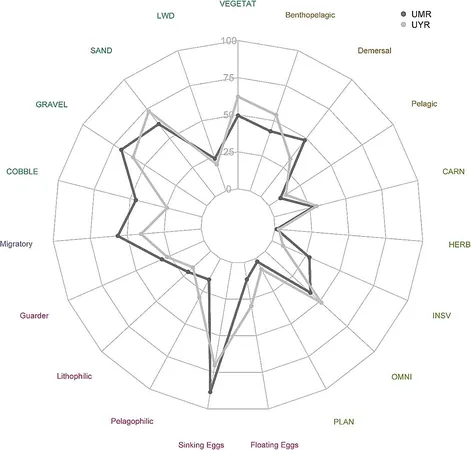
How to Save the World’s Majestic Rivers: Shocking Discoveries from the Yangtze and Mississippi!
2024-09-16
Author: Nur
The colossal rivers that wind across our planet have undergone significant modifications in the name of progress—supporting food production, generating hydropower, and enhancing navigation and trade. While these advancements are crucial for accommodating our ever-growing population, they come at a staggering cost to the intricate balance of aquatic ecosystems.
In order to reconcile human needs with the pressing call for biodiversity conservation, innovative inter-basin partnerships are emerging, aiming to exchange best management practices. However, the effectiveness of these exchanges is currently hindered by a lack of comparisons that spotlight the similarities and differences among large river systems. Enter the Mississippi and Yangtze Rivers.
Recent studies reveal a startling finding: there is a strikingly small number of shared fish species between these two immense river systems. 'When we analyze the fish species in both the Mississippi and Yangtze Rivers, it becomes clear that only a few are common across both,' shared Kyle Brumm, a doctoral student from Michigan State University's Department of Fisheries and Wildlife. This lack of overlap complicates the effort to make meaningful ecological comparisons.
To confront these challenges head-on, an international team of researchers undertook a groundbreaking project that harnessed data on over 120 species. They delved into the fish's feeding habits, reproductive strategies, and habitat preferences. Their research, detailed in the journal Water Biology and Security, unveils fascinating insights into the environmental responses of fish in these critical ecosystems.
Brumm stated, 'By correlating species traits with environmental parameters such as climate variations, land use changes, and water quality, we illuminate the underlying mechanisms driving biodiversity loss.' This critical analysis reveals how species' survival, growth, and reproductive success are intertwined with environmental factors like food availability and habitat complexity.
Surprisingly, despite the differences in species identity, the traits found in fish assemblages in both the Mississippi and Yangtze Rivers display remarkable similarities. The traits influencing species responses most significantly related to their feeding habits and habitat preferences. This convergence sheds light on the essential ecological functions—like nutrient cycling—at risk in both systems.
In a grander context, these insights not only deepen our understanding of these two prominent rivers but also offer tools that could benefit the management of large rivers worldwide—most of which remain understudied when compared to their smaller counterparts. 'The methodologies we developed here can be adapted to predict and test hypotheses in other large river ecosystems globally,' Brumm emphasized.
As the battle to save our riverine ecosystems heats up, this research uncovers a path forward, illustrating how knowledge exchange and focused management strategies can combat the looming threats our aquatic habitats face. Stay tuned, because the future of our rivers might just depend on it!




 Brasil (PT)
Brasil (PT)
 Canada (EN)
Canada (EN)
 Chile (ES)
Chile (ES)
 Česko (CS)
Česko (CS)
 대한민국 (KO)
대한민국 (KO)
 España (ES)
España (ES)
 France (FR)
France (FR)
 Hong Kong (EN)
Hong Kong (EN)
 Italia (IT)
Italia (IT)
 日本 (JA)
日本 (JA)
 Magyarország (HU)
Magyarország (HU)
 Norge (NO)
Norge (NO)
 Polska (PL)
Polska (PL)
 Schweiz (DE)
Schweiz (DE)
 Singapore (EN)
Singapore (EN)
 Sverige (SV)
Sverige (SV)
 Suomi (FI)
Suomi (FI)
 Türkiye (TR)
Türkiye (TR)
 الإمارات العربية المتحدة (AR)
الإمارات العربية المتحدة (AR)